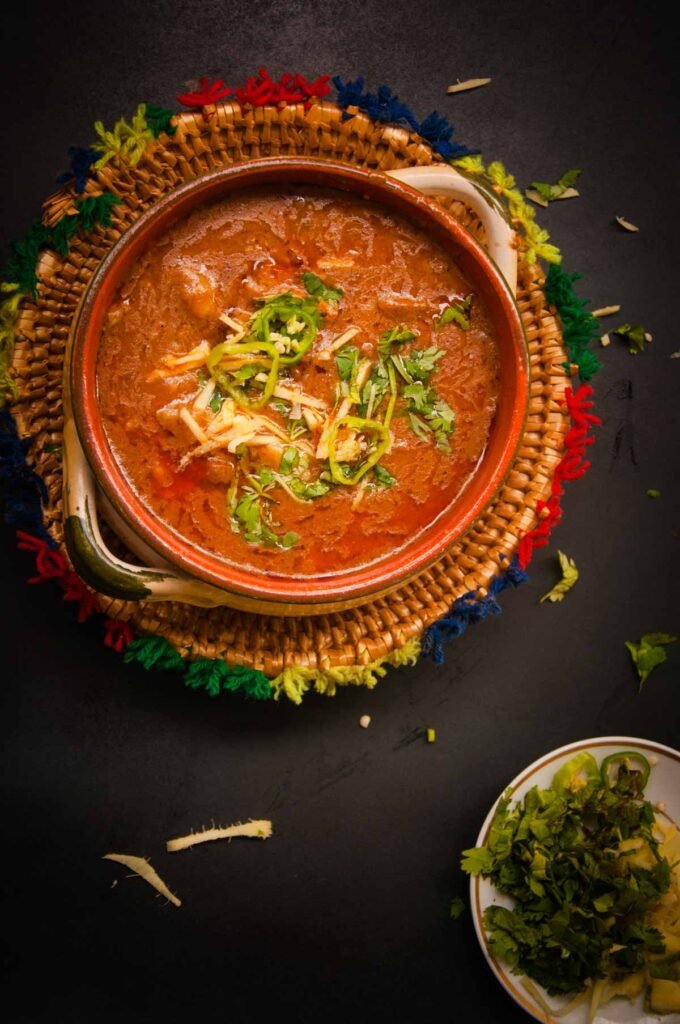Recipe Of Nehari

Nihari is a traditional South Asian dish, particularly popular in Pakistan and India, known for its rich and flavorful gravy. It’s often enjoyed as a breakfast dish but can be eaten at any time of the day. The name “Nihari” is derived from the Arabic word “Nahar,” meaning morning, reflecting its traditional consumption as a morning meal. Here’s what Nihari is typically made of:
Key Ingredients:
- Meat:
- Beef Shank: The most common meat used, particularly the shank, which has a lot of connective tissue that breaks down into gelatin, giving the dish its signature texture.
- Lamb: An alternative to beef, often used in some regions.
- Goat or Mutton: Also a popular choice in different areas.
- Chicken: A lighter version, but less traditional.
- Nihari Masala:
- Ginger and Garlic Paste: These provide the base flavor.
- Cumin Seeds: Adds warmth and earthiness.
- Coriander Seeds: For a slightly citrusy, nutty flavor.
- Fennel Seeds: Gives a sweet, licorice-like flavor.
- Black Peppercorns: Adds heat.
- Cloves: For a warm, slightly sweet spice.
- Green Cardamom: Adds a sweet, floral note.
- Black Cardamom: Adds a smoky, earthy flavor.
- Cinnamon Sticks: For sweetness and warmth.
- Bay Leaves: For an aromatic, slightly bitter flavor.
- Nutmeg and Mace: Adds warmth and a slight sweetness.
- Red Chili Powder: For heat.
- Turmeric Powder: Adds color and earthiness.
- Garam Masala: A blend of spices that adds depth and warmth.
- Salt: To taste.
- Flour (Optional):
- Wheat Flour: Sometimes used to thicken the gravy.
- Ghee or Oil:
- Used for sautéing and cooking the meat and spices, adding richness to the dish.
- Water or Bone Broth:
- Used to slow-cook the meat, creating a rich, flavorful gravy.
- Garnishes:
- Julienned Ginger: Adds freshness and a mild spicy kick.
- Fresh Coriander Leaves: For a burst of freshness.
- Sliced Green Chilies: Adds heat and color.
- Lemon Wedges: For a touch of acidity to balance the richness.
- Fried Onions: Adds sweetness and a crispy texture.
Preparation Overview:
- Slow-Cooking: Nihari is traditionally slow-cooked over several hours, allowing the meat to become incredibly tender and the flavors to meld together. The cooking process often begins the night before, with the dish being left to simmer overnight.
- Thickening: Some versions use flour to thicken the gravy, while others rely on the natural gelatin released from the bones during cooking.
- Serving: Nihari is typically served with naan, paratha, or rice, and is often garnished with ginger, coriander, green chilies, and a squeeze of lemon juice.
Nihari is a dish that showcases the deep, complex flavors of South Asian cuisine, with its rich, spicy gravy and tender meat.




